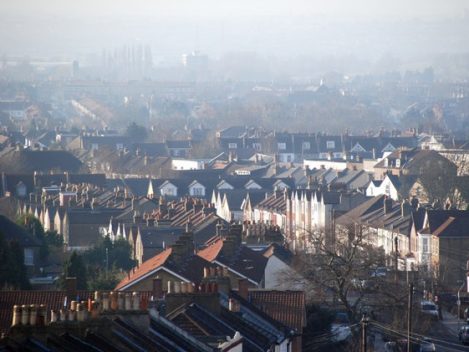Recognising that air pollution remains a “pervasive menace”, the Royal Society’s Global Environmental Research Committee (GERC) focused its most recent meeting on air quality and atmospheric composition.

The air we breathe is rarely out of the news or far from political debate. We see headlines like “London reaches legal air pollution limit just one month into the new year”, stories of cities in lockdown, and announcements like Defra’s forthcoming Clean Air Strategy and expected clampdown on wood and coal fires.
Recognising that air pollution remains a “pervasive menace”, the Royal Society’s Global Environmental Research Committee (GERC) focused its most recent meeting on air quality and atmospheric composition – stepping back from the headlines to examine the state of the science.
While GERC’s report outlines four priority research areas, here I take a closer look at why understanding and acting on air pollution is far from straightforward.
It’s an interdisciplinary challenge
The science of air quality spans disciplines as diverse as digital technology, big data, energy, climate change, land use and health. Integrating some, let alone all, of these things can be challenging.
For example, despite being inexorably linked, air quality and climate change are generally treated as distinct areas of science and policy. Similarly, health and the environment are often discussed as separate spheres of the air quality debate. That said, there are encouraging signs that these silos are beginning to break down. Cue the combined references to health, the environment and air quality in Defra’s “Areas of Research Interest”, or the scope of the Chief Medical Officer’s annual report on the health impacts of pollution.
Air quality also strays into several areas of social science, which need considering alongside the relevant natural sciences. Firstly, there’s a complex set of relationships to grasp: how modern society determines the scale and sources of emissions; how emissions affect the composition of the atmosphere; how the composition of the atmosphere affects our environment and lifestyle, and so helps shape modern society; and so on. Secondly, as research shifts from understanding the problem to findings solutions, socio-economic research into things like consumer behaviour and purchasing power becomes even more important.
Such an interdisciplinary challenge can be difficult to comprehend. And although complex systems modelling can help, adding more components to models can simply result in more uncertainties.
The present isn’t a good guide to the future
Another challenge is that the mixture of things we put into the atmosphere is constantly changing – from shifting ratios of transport emissions to entirely unfamiliar chemicals from new commercial or manufacturing sectors. Future air pollution is also likely to contain more pollutants from indoor activities such as cooking and cleaning.
The upshot of this ever-changing picture is that current measurements can’t reliably predict or project the future. Current measurements also can’t reliably indicate where new regulation will be needed. You only need look at the explosion of regulated pollutants – from tens to thousands – to appreciate this point.
Research questions don’t necessarily match policy questions
A recurring refrain during GERC’s discussion went something like: “Wouldn’t it be helpful if we could pinpoint the specific pollutant that’s most harmful to human health and then target policies towards it?”
Easier said than done.
A lot of work goes into monitoring specific pollutants – how brake dust is increasing in urban areas, for example. Similarly, many researchers focus on trends in specific diseases related to air pollution. And sometimes these things are coupled, with research into things like the effects of diesel pollution on cardiovascular disease.
However, what these pollutant-focused, or disease-focused, or pollutant-plus-disease-focused studies fail to provide is any sort of comparative view. So we’re still relatively far from understanding the comparative toxicology of pollutants.
We’re also relatively far from a holistic view of the problem, although there’s interesting new work on the “exposome” – the measure of all the atmospheric exposures of an individual in their lifetime and how those exposures relate to health.
The complexities of understanding and tackling air pollution are what make this issue such fertile ground for scientific and policy engagement. The interdisciplinary nature of the research and the unequal division of risks, opportunities and policy levers between different government departments also make the challenge of synthesising evidence to address policy questions even more acute.
The Society will be trialling new methods for rapidly synthesising interdisciplinary evidence related to air quality, so keep your eyes peeled for further insights in the coming months.
For now, you can read more in Professor David Fowler’s blog post from last year’s “Science for Defra: excellence in the application of evidence” conference, and in a follow-up post from Gabrielle Laing.
